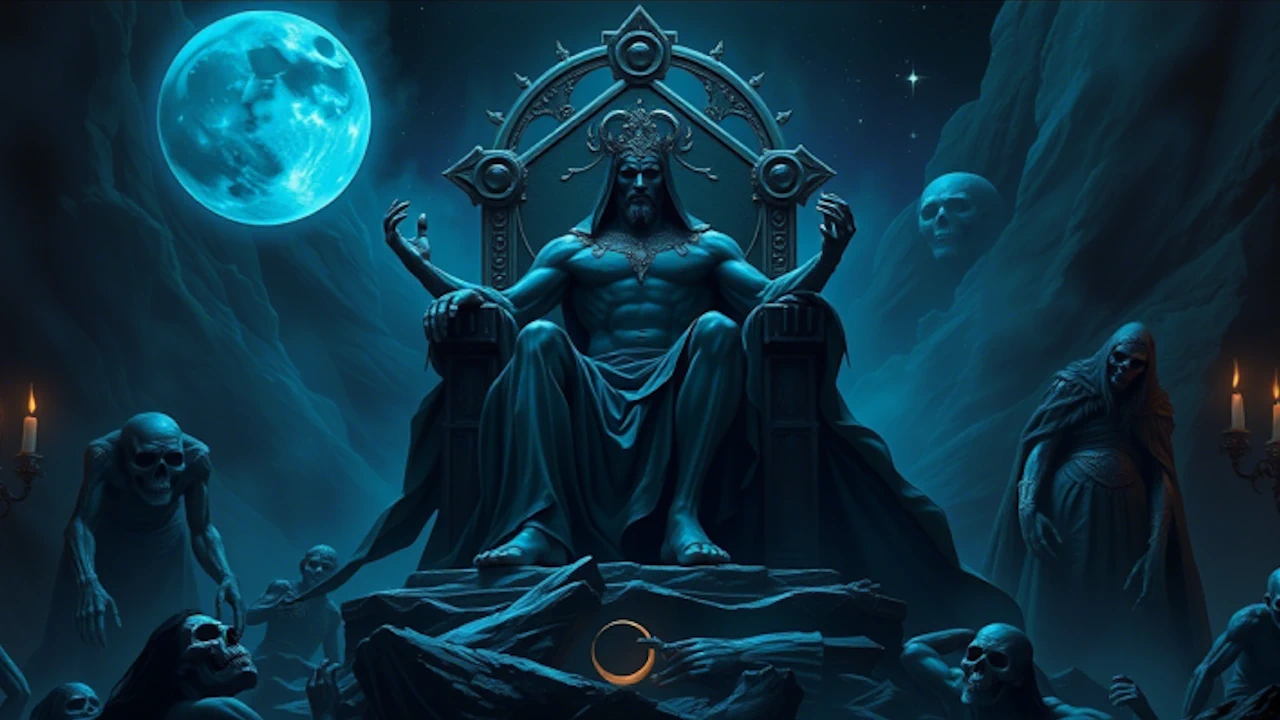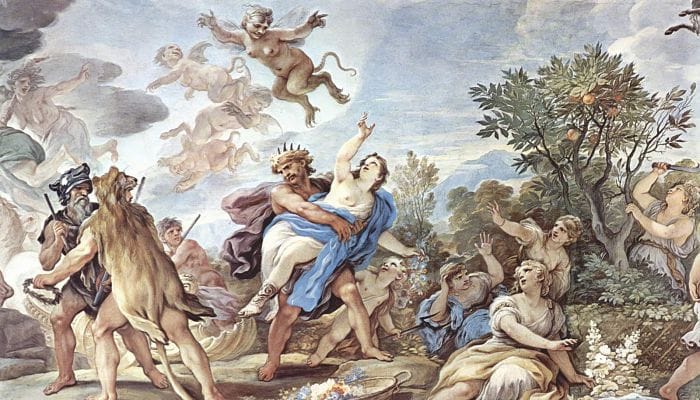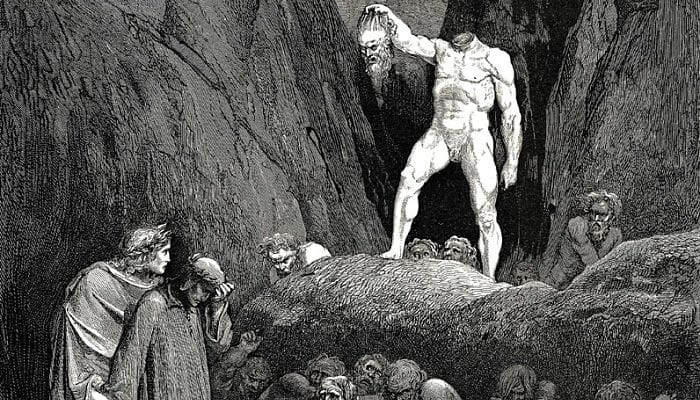Meet with us the god Pluto, an icon of Roman mythology. Discover his exploits, powers and how he related to other gods.

Who is Pluto?
Pluto judge of the dead. The ancient Romans were afraid to utter the name Pluto for fear that it would attract the deity’s attention. He was also a god of wealth, as the lord of all metals and riches that lie beneath the earth. His name derives from the Latinized form of the Greek name Plouton, meaning wealth.
He was formerly referred to as Dis Pater, meaning Father of the Gods. However, he is best known for his role as ruler of the underworld and as a counterpart to the Greek god Hades. When the Romans conquered Greece, the gods Hades and Pluto combined and replaced Dis Pater as the god of wealth, the dead and agriculture.
Origin of Pluto
The god Pluto lived in a palace in the underworld, far from the other gods who lived on Mount Olympus. His role was to reclaim the souls that inhabited his domain of the underworld. Those who entered were destined to remain there for eternity. The entrance gates were guarded by his huge three-headed dog, Cerberus.

The three brother gods, Jupiter, Neptune and Pluto, were charged with ruling the worlds after the death of their powerful father Saturn. Jupiter took the sky, Neptune became ruler of the sea and Pluto’s domain was the underworld. Eventually, Jupiter became the supreme god who ruled all the earth and sky, while Neptune married and remained in the sea, and Pluto happily remained in the underworld where he presided over the afterlife. From time to time, he emerged to earth for a visit or a meeting of the gods.
The abduction of Proserpina
The King of the Gods, Jupiter, had a niece named Proserpina. She was the daughter of his sister Ceres, the goddess in charge of the harvest. In consideration of her precious domain, everyone, gods and mortals alike, did all they could to keep Ceres happy.
Proserpina was a lovely and happy young woman. One day, while she was in the field picking flowers, she was seen by her uncle Pluto. He was enchanted by her beauty and felt compelled to have her, so he quickly kidnapped Proserpina and took her to the underworld in his chariot before anyone could interfere.
The seeds
Despairing of her fate, Proserpina refused to speak to Pluto, who had fallen madly in love with her, and also refused to eat. According to legends, whoever ate a meal in the underworld would seal her fate and would never be able to leave. Hoping that someone would come to her rescue, she endured as long as she could. Finally, after a week of crying and starving, she could no longer bear it, and ate six pomegranate seeds.
By this time, back on earth, Jupiter was becoming increasingly worried about Ceres and the crops. Ceres was absolutely sad and crying for her missing daughter. Jupiter decided to send his youngest son, Mercury, the messenger, known for his excellent negotiating skills, to visit the underworld and try to make a deal with Pluto.

Since Proserpina had already eaten the pomegranate seeds, and Pluto was desperately in love, Mercury needed to think quickly. After much discourse, Pluto agreed that if Proserpina would marry him she would live as queen of the underworld for six months of the year and in the spring she could return to earth for six months. Proserpina also agreed to these terms, as did Ceres.
Each spring, Ceres blooms all the flowers as a welcome to her beloved daughter returning from the underworld. In autumn, when Proserpina returns to Pluto, Ceres weeps and lets all the crops die until the following spring, when the cycle begins again. And so, according to legend, that is why we have seasons.
Symbols
The one-eyed giant, Cyclops, gave Pluto the invisibility cap to aid in his battle against the Titans. The cap allows the wearer to become invisible to all other supernatural and mortal beings.
Pluto is also symbolized by the pomegranate, the fruit of the underworld. Proserpina ate six seeds of the symbolic fruit and sealed her fate. The hard outer shell of the pomegranate encapsulates a multitude of seeds representing fertility, prosperity and abundance.
Each spring, when Proserpina emerges from the underworld and arrives on earth, she brings the seeds of fertility and the flower of spring. Pluto has a key and a scepter, which he uses to protect his kingdom and prevent the dead from escaping.
Historical Influence
The Romans adopted much of Greek culture and mythology. Hades, their Greek counterpart, was a darker god than Pluto, who eventually became known as the ruler of the afterlife and a just judge of the dead. The Romans combined their deity of wealth – Dis Pater – with Pluto/Hades.
The Roman underworld was not the fiery, dark, hellish place commonly depicted in Christianity. It consisted of five parts, through which all the deceased, good and bad, passed at the time of their death. The first three divisions consisted of a journey of the souls, where they were classified.
After crossing the waters of the river Styx, the good souls finally ended up in Elysium, the land of the blessed, and lived out their eternity in peace and happiness. Only the evil ended up in Tartarus, the region of torment. The palace of Pluto and Proserpina was located at the entrance of the road to the Elysian Fields, although they presided over the entire underworld.
Modern Influence of Pluto
The ninth planet in our solar system, now considered a dwarf planet, is named after the Roman god Pluto. The planet was discovered in 1930. The Lowell Observatory in Arizona had a contest to name the planet. Venetia Burney of Oxford, England, an 11-year-old girl, suggested the name Pluto to her grandfather, who passed it on to the institute. The astronomers unanimously selected the name.

Pluto’s moons are also associated with the god. Charon is the name of the first moon discovered, after the ferryman who transported the souls of the dead to the underworld. The other moons were later named for Charon’s mother Nix, the underworld guardians Hydra and Cerberus, and Styx, the river passage to the underworld.
Later that same year, Walt Disney’s hound dog character, originally named Rover, was nicknamed Pluto. Mickey Mouse’s puppy has remained Pluto to this day and remains a prominent character appearing in movies, television specials, video games and as an encounter character at Disney theme parks.

